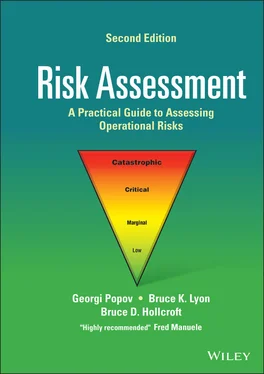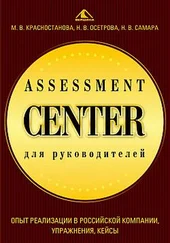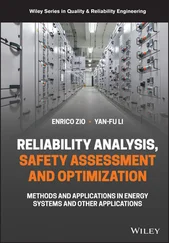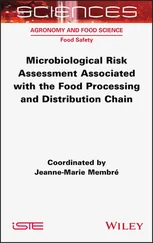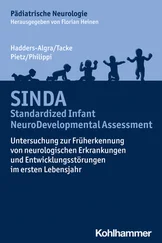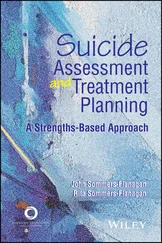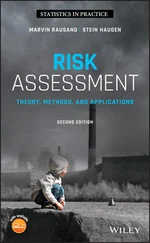Georgi Popov - Risk Assessment
Здесь есть возможность читать онлайн «Georgi Popov - Risk Assessment» — ознакомительный отрывок электронной книги совершенно бесплатно, а после прочтения отрывка купить полную версию. В некоторых случаях можно слушать аудио, скачать через торрент в формате fb2 и присутствует краткое содержание. Жанр: unrecognised, на английском языке. Описание произведения, (предисловие) а так же отзывы посетителей доступны на портале библиотеки ЛибКат.
- Название:Risk Assessment
- Автор:
- Жанр:
- Год:неизвестен
- ISBN:нет данных
- Рейтинг книги:4 / 5. Голосов: 1
-
Избранное:Добавить в избранное
- Отзывы:
-
Ваша оценка:
- 80
- 1
- 2
- 3
- 4
- 5
Risk Assessment: краткое содержание, описание и аннотация
Предлагаем к чтению аннотацию, описание, краткое содержание или предисловие (зависит от того, что написал сам автор книги «Risk Assessment»). Если вы не нашли необходимую информацию о книге — напишите в комментариях, мы постараемся отыскать её.
Explore the fundamentals of risk assessment with references to the latest standards, methodologies, and approaches Risk Assessment: A Practical Guide to Assessing Operational Risks
Risk Assessment: A Practical Guide to Assessing Operational Risks
Risk Assessment — читать онлайн ознакомительный отрывок
Ниже представлен текст книги, разбитый по страницам. Система сохранения места последней прочитанной страницы, позволяет с удобством читать онлайн бесплатно книгу «Risk Assessment», без необходимости каждый раз заново искать на чём Вы остановились. Поставьте закладку, и сможете в любой момент перейти на страницу, на которой закончили чтение.
Интервал:
Закладка:
2.4 OSHA Compliance and Risk Assessments
In the United States, the OSHA is the safety compliance standard minimum for employers. In 1970, the Occupational Safety and Health Act (OSH Act) was formed, making employers responsible for providing a safe and healthful workplace. OSHA’s stated mission is to assure safe and healthful workplaces by setting and enforcing standards, and by providing training, outreach, education, and assistance. The following description is provided by the OSHA website:
The OSH Act covers most private sector employers and their workers, in addition to some public sector employers and workers in the 50 states and certain territories and jurisdictions under federal authority. OSHA covers most private sector employers and their workers in all 50 states, the District of Columbia, and other U.S. jurisdictions either directly through Federal OSHA or through an OSHA‐approved state program. Workers at state and local government agencies are not covered by Federal OSHA, but have OSH Act protections if they work in those states that have an OSHA‐approved state program. Four additional states and one U.S. territory have OSHA‐approved plans that cover public sector workers only. State‐run health and safety programs must be at least as effective as the Federal OSHA program. OSHA standards are rules that describe the methods that employers must use to protect their employees from hazards.
There are OSHA standards for Construction work, Maritime operations, Agriculture, and General Industry, which is the set that applies to most worksites.
Employers must also comply with the General Duty Clause of the OSH Act, which requires employers to keep their workplace free of serious recognized hazards. This clause is generally cited when no OSHA standard applies to the hazard.
Before OSHA can issue a standard, it must go through an extensive and lengthy process that includes substantial public engagement, notice, and comment periods. This is known as OSHA's “rulemaking process.” According to the “OSHA Rulemaking Process” flowchart, the process begins with an identified health or safety hazard, and includes hazard analyses and risk assessments. In fact, many of the standards are in direct response to a serious accident or large loss such as the 1910.119, Process Safety Management of Highly Hazardous Chemicals standard and the Union Carbine Bhopal methylisocyanate (MIC) gas release tragedy of 1984.
2.4.1 1910.132, Personal Protective Equipment Standard
Hazard determination, analysis, and assessment are touched upon in some OSHA regulations but not formally referred to as “risk assessment.” The most basic is OSHA 29 CFR 1910.132, Personal Protective Equipment (PPE) General Requirements . This requires employers to assess the workplace to determine if hazards are present, or likely to be present, which will necessitate the use of PPE. It applies to types of PPE that are not required by another specific OSHA regulation covering hazards such as noise or respiratory contaminants. This regulation requires employers to perform and document a Hazard Assessment of workplace hazards requiring personal protective equipment. Generally, it requires employers to identify types of hazards and select appropriate PPE as stated in 1910.132 (d) below:
Hazard assessment and equipment selection –The employer shall assess the workplace to determine if hazards are present, or are likely to be present, which necessitate the use of personal protective equipment (PPE). If such hazards are present, or likely to be present, the employer shall:
Select, and have each affected employee use, the types of PPE that will protect the affected employee from the hazards identified in the hazard assessment;
Communicate selection decisions to each affected employee; and,
Select PPE that properly fits each affected employee. Note: Non‐mandatory Appendix B contains an example of procedures that would comply with the requirement for a hazard assessment.
The employer shall verify that the required workplace hazard assessment has been performed through a written certification that identifies the workplace evaluated; the person certifying that the evaluation has been performed; the date(s) of the hazard assessment; and, which identifies the document as a certification of hazard assessment.
An example of a PPE Hazard Assessment can be found in Chapter 5, Fundamental Risk Assessments.
2.4.2 1910.119, Process Safety Management Standard
As indicated earlier, OSHA 29 CFR 1910.119, Process Safety Management (PSM) of Highly Hazardous Chemicals is the most prominent standard containing requirements for risk assessment. The Process Safety Management standard was established in 1992 and requires process hazard analyses (PHAs) for regulated industrial processes containing 10 000 pounds or more of a hazardous chemical for the purpose of protecting the employees working in and around such processes. 1910.119(e) requires an initial process hazard analysis (PHA) be conducted and revalidated every five years with a follow‐up PHA. While this requirement is called a process hazard analysis, a PHA is similar to a risk assessment in that it identifies and analyzes the hazards and existing controls to determine if additional controls are needed.
The PHA must be conducted on a prioritized basis and consider the extent of the hazard, number of potentially affected people, age of the process, and operating history of the process. Some of the same risk assessment techniques mentioned in this book and various assessment standards are referenced by the OSHA PSM regulation including those below.
What‐If Analysis
Checklists Analysis
What‐If/Checklists Analysis
Hazard and Operability Study (HAZOP)
Failure Mode and Effects Analysis (FMEA)
Fault Tree Analysis (FTA)
The PHA must address the potential consequences of past incidents and the potential consequences of the failure of engineering and administrative controls. It must also consider human factors and include a qualitative evaluation of safety and health effects of the failure of controls on employees in the workplace. Other notable sections of the Process Safety Management standard include requirements for Pre‐Start‐up Safety Reviews (PSSR) and Management of Change (MOC) procedures.
The references to prioritization and consequences in the PSM regulation are consistent with a risk assessment. All of these PHA activities must be formal and documented. Further discussion can be found on PHAs in Chapter 7, What‐if Hazard Analysis.
2.4.3 Other OSHA Standards
Other OSHA standards require that a hazard or exposure determination be made, and that existing hazards are controlled. Examples include the 1910.146, Permit‐required Confined Space standard which requires an initial evaluation of the workplace to identify confined spaces and determine if they are “permit‐required” spaces, the identification and evaluation of hazards prior to entry into Permit spaces; and the 1910.1200, Hazard Communication standard which requires an inventory of hazardous chemicals and a hazard determination be made. Thus, risk assessments, while not specifically required, are a technique that should be used to comply with these requirements.
Also consider the OSHA General Duty Clause requirement that all employers must provide their employees a workplace that is free of recognized hazards. The General Duty Clause is intended to apply to all hazards that the employer should be aware of, but that are not covered by a specific OSHA regulation. A logical approach to this requirement is to perform hazard identification and analysis, and risk assessment. Again, risk assessment is not specifically required by the General Duty Clause, but a thorough risk assessment would enable employers to comply with this OSHA requirement.
Читать дальшеИнтервал:
Закладка:
Похожие книги на «Risk Assessment»
Представляем Вашему вниманию похожие книги на «Risk Assessment» списком для выбора. Мы отобрали схожую по названию и смыслу литературу в надежде предоставить читателям больше вариантов отыскать новые, интересные, ещё непрочитанные произведения.
Обсуждение, отзывы о книге «Risk Assessment» и просто собственные мнения читателей. Оставьте ваши комментарии, напишите, что Вы думаете о произведении, его смысле или главных героях. Укажите что конкретно понравилось, а что нет, и почему Вы так считаете.
